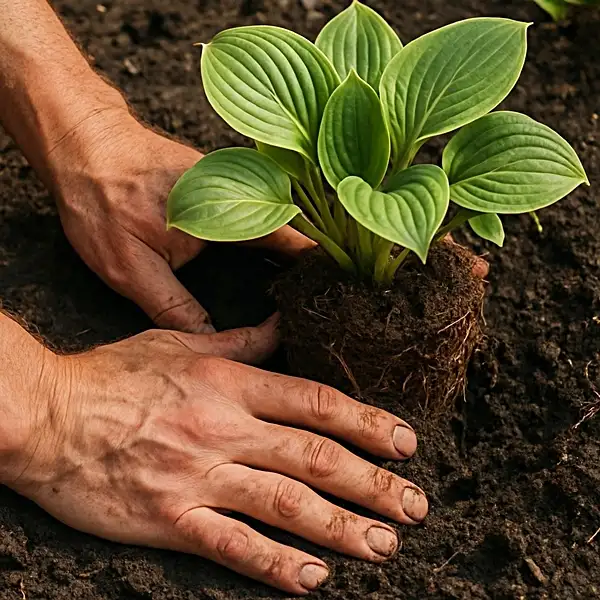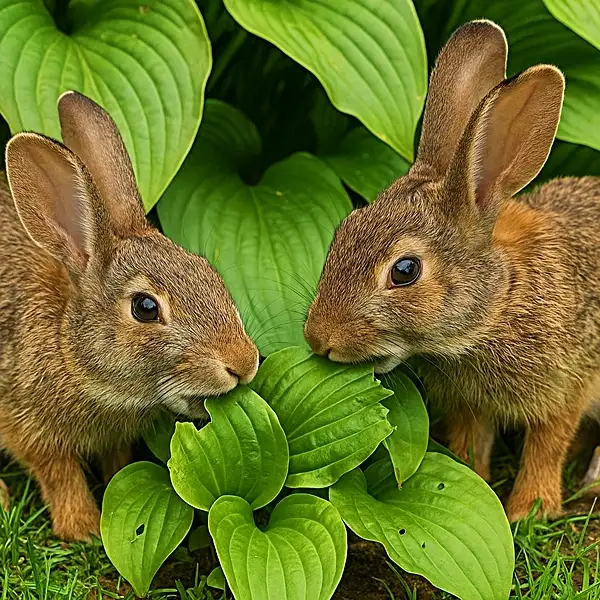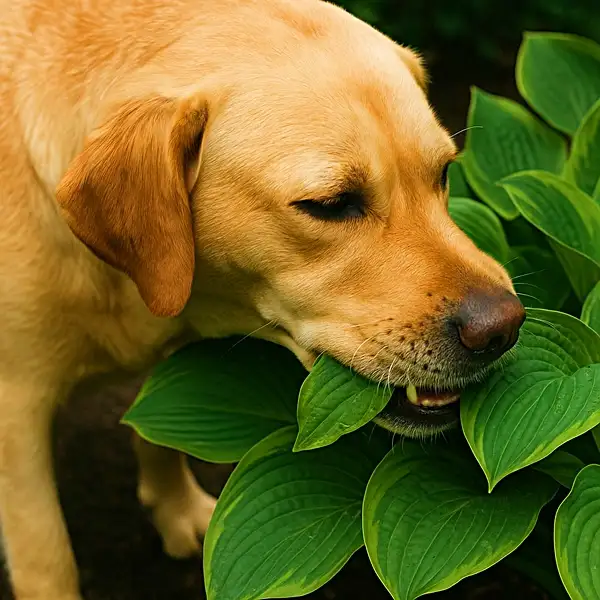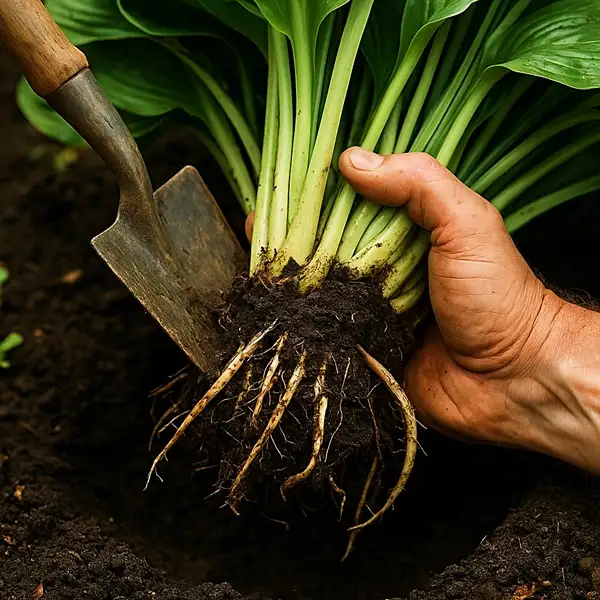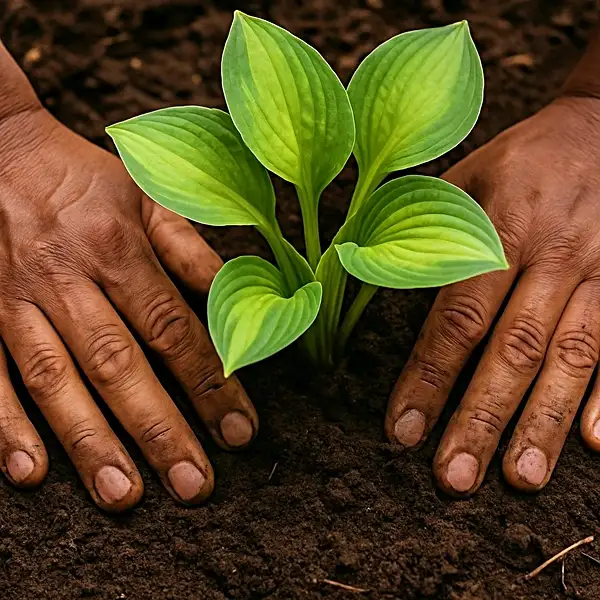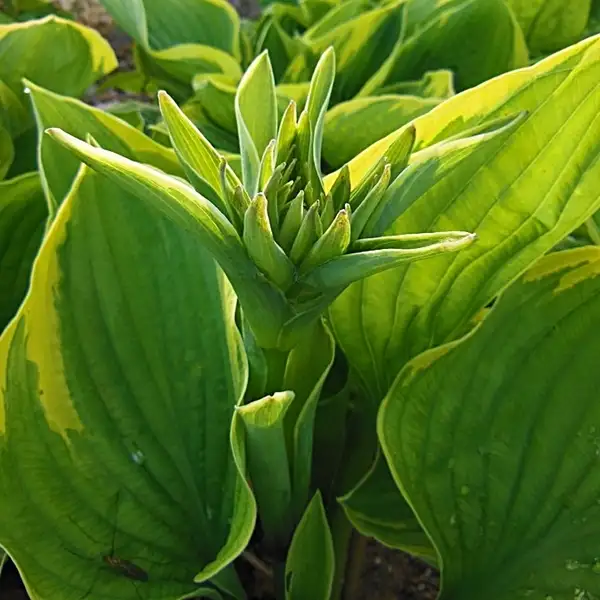Key Takeaways
| 🌱 What You’ll Learn | 🔒 Why It Matters |
|---|---|
| The ideal & best timing to transplant hostas | When to transplant hostas? Avoid setbacks by syncing with the hosta’s natural rhythm |
| How to prepare your soil and location like a pro | Boost growth, color, and survival with less effort |
| Step-by-step transplanting guidance | Ensure a strong establishment from day one |
| Mistakes most gardeners make (and how to avoid them) | Prevent rot, overcrowding, and stunted growth |
| Proven post-transplant care tips | Support recovery and long-term hosta health |
Lifecycle of Hostas
Hostas, commonly referred to as plantain lilies, boast an impressive portfolio of about 70 species, displaying vibrant foliage from spring through fall.
They capture attention in landscapes primarily for their lush greenery rather than their delicate flowers. Understanding a hosta’s lifecycle is crucial for successful gardening with this plant species.

- Initially, hosta bulbs or plants are set into fertile, moist soil during early spring or late summer – two periods best suited for transplanting.
- As spring advances, these hardy perennials surge forth with new growth, where pointed leaves unfurl, showcasing various hues & leaf patterns depending on the variety.
- By mid-summer, hostas will have peaked physically but continue to add aesthetic intrigue with tall stalks topped by bell-shaped flowers ranging from white to lavender.
- Though they enter a period of dormancy during winter, when all aerial parts die off, below-ground activity remains vigorous as root systems delve deeper into soil, preparing for resurgent growth in spring.
Bill Meyer, a respected hosta breeder & enthusiast in Hosta Library, once quoted,
“There is no rush & great hurry fearing that your hosta will not survive if you do not move it right now.”
– American Hosta Society
2 Best Seasons for Transplanting Hostas

The optimal time suitable for transplanting hostas usually correlates directly with their most active growing seasons namely early spring & late summer till early fall.
| Season | Advantages | Considerations |
|---|---|---|
| Early Spring 🌱 |
|
|
| Late Summer to Early Fall 🍂 |
|
|
Zones: Suitable for USDA Hardiness Zones 3–9. Slight timing shifts may apply based on local climate.
Nick Federoff states,
“If you want success weeding out weeds, give your plants an area where they have nothing else to worry about but producing & establishing”.
Gardening agencies suggest a mild sunny day with soil temperature around 50-60 degrees Fahrenheit marking optimal marks for transplanting hostas.
3 Expert Tips: Preparing Your Garden for Hosta Transplants
Prepare your garden well in advance before you set out to transplant hostas. Begin by selecting a location that offers the right balance of shade, moisture & space for growth – factors crucial for these landscape stars.
| Preparation Tips | Best Practices |
|---|---|
| Light |
Source: Hostapedia |
| Soil |
|
| Mulching |
Source: University of Vermont Extension Department of Plant and Soil Science |
5 BEST Steps To Successfully Transplant Hostas

| Step | Description |
|---|---|
| 1. Digging |
|
| 2. Lifting |
|
| 3. Division (if needed) |
Tip by Joe Lamp’l, Growing a Greener World TV |
| 4. Replanting |
Source: University of Illinois Extension |
| 5. Watering |
|
3 Most Common Mistakes to Avoid While Transplanting Hostas
While many gardeners have widely embraced hostas due to their unique versatility, some common mistakes can be easily avoided –
| Mistake | Why It’s a Problem |
|---|---|
|
|
|
Warning by American Hosta Growers Association |
|
|
2 Simple Post-Transplant Care Tips for your Hostas
Post-transplant care maintenance is significantly crucial in determining ultimate performance success.
| Care Activity | Purpose & Tips |
|---|---|
| Watering 💧 |
Tip from Better Homes & Gardens |
| Slug/Snail Control 🐌 |
|
Final Thoughts
Transplanting hostas does not present Herculean gardening tasks when carefully planned & executed with attention to fundamental norms, predominantly observing nature’s rhythms, enhancing aesthetic appeal in crevices or otherwise difficult planting zones & fulfilling sustainable, eco-friendly landscaping dreams with true horticultural spirit.
Frequently Asked Questions
How to reduce shock when transplanting hostas?
Dig early in the morning, use sharp tools & avoid damaging roots. Replant quickly, water thoroughly & mulch to retain moisture & reduce stress.
Can you transplant hostas anytime?
No! Avoid extreme temperatures. Stick to their active growing seasons for best results.
What month is best to transplant hostas?
Transplant in March–April or August–September, depending on your local climate zone.
How to dig up and replant hostas?
Dig wide around clump, lift gently, divide if needed & replant at same crown level. Firm the soil & water well.
How long can hostas be out of ground?
Keep them out no longer than a few hours. Wrap roots in damp cloth if delays are unavoidable.


